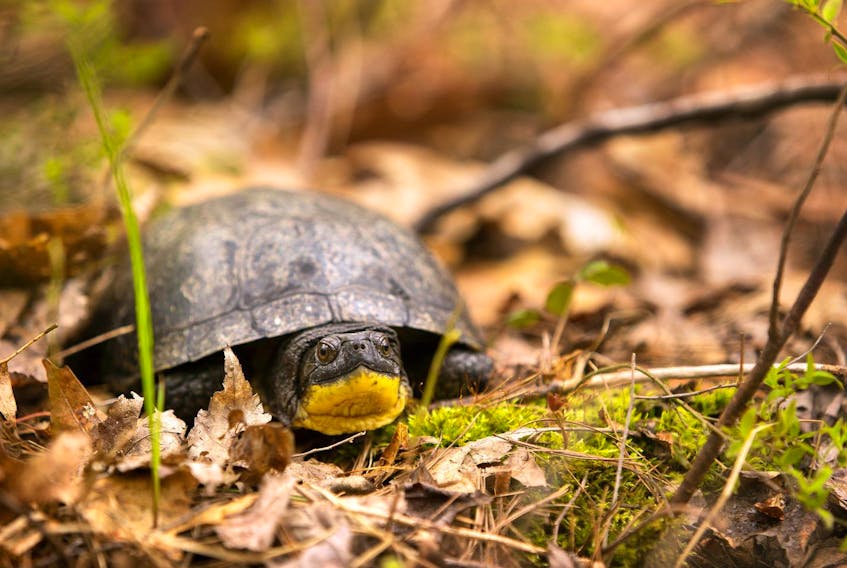Sometimes a little trickery goes a long way in figuring out an animal’s behaviour.
A team of researchers pulled a fast one on a group of Blanding’s turtles in Minnesota that helped prove the endangered reptile can rely on the sun alone for navigation.
“We’re involving the sun and we’re involving an internal biological clock,” said John Krenz, a biology professor at Minnesota State University, who led the research. “To prove that they are using the sun, we can manipulate the clock. So we do what’s called a clock shift.”
In one part of the complicated experiment, the research team — which included Blanding’s expert Justin Congdon of the University of Georgia — changed lighting conditions for half of 103 hatchlings in the Mississippi River watershed near MSU.
“You have one group of animals that are in a normal solar period, the light is on for regular periods,” Krenz explained in a recent phone interview. “The other half, you turn the lights on at midnight and then they go off at noon. So their clock shifted six hours.
“Then we released both groups out into the field together in daylight, say at 9 a.m. The sun is in the southeast, the normal group that has the normal solar period will go correctly, they’d go west (toward wetland habitat). But the clock-shifted group thinks that it’s three in the afternoon already because their lights have been on since midnight. ... They would go 45 degrees to the right of the sun and they end up going straight south.”
To complicate things even more for the tiny turtles, the experiment was done in a field of tall corn, so they didn’t have their usual landmark cues such as a stand of trees on the horizon. On top of that, some had magnets attached to them that disrupted their ability to use the Earth’s magnetic field as a directional cue.
“These results show that the sun compass is necessary and sufficient to help Blanding’s turtles orientate after they have hatched, even if natural environmental cues are not visible,” Krenz said.
A Nova Scotia biologist who has spent much of his professional life studying the Blanding’s turtle was impressed by the team’s work.
“It’s fascinating actually,” said Tom Herman, who is professor emeritus at Acadia University and co-chair of the reptile and amphibian sub-committee for COSEWIC, the federal government’s Committee on the Status of Endangered Wildlife in Canada.
“Movement and behaviour in animals is complex. I think one of the things we often do especially with turtles is that we assume that turtles are not particularly complicated,” Herman said with a chuckle.
“I would counter that argument, having worked on them for many decades now. I would argue that we’re probably only beginning to understand some of how turtles make decisions. So this kind of study is really interesting.”
Herman said there at least 300 Blanding’s turtles in Nova Scotia, one of our four amphibious turtle species. They can live for up to 80 years but females don’t begin to produce eggs (an average of 10 each year) until about age 20. The survival rate is less than one per cent — coyotes, raccoons, foxes and skunks are happy to gobble up the eggs and toonie-sized hatchlings.
For the few that make it to adulthood, good navigation skills are crucial for survival.
“The neat thing about turtles is that they move through some pretty complex landscapes,” Herman said. “We’ve tracked them over years and they often use the same routes between seasonal habitats. They’re born in one place, they nest in another place, they spend the summer in another place — they have to move between those environments. In those kinds of long-distance movements, they’re going to accumulate information.
“They’re making pretty complex maps in their heads and I think we have historically underestimated the complexity of their mapping skills.”









